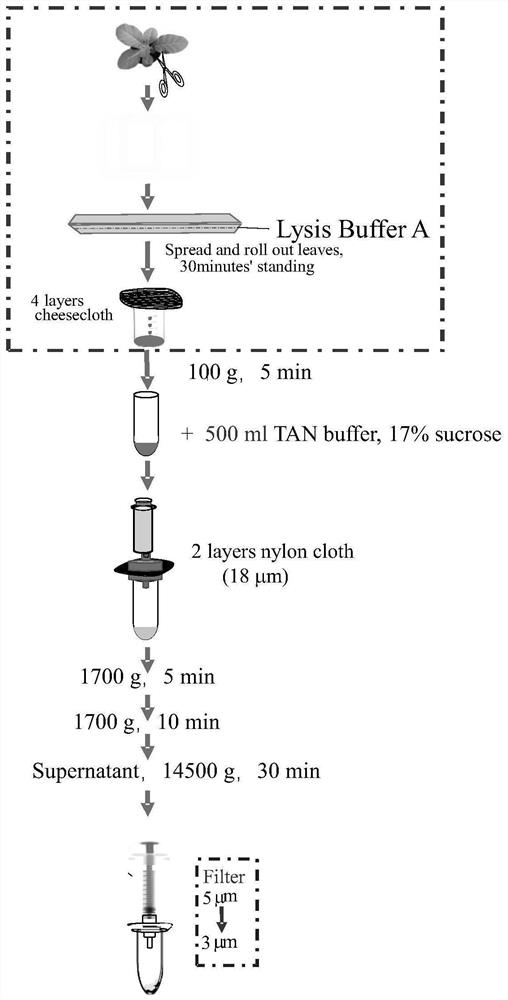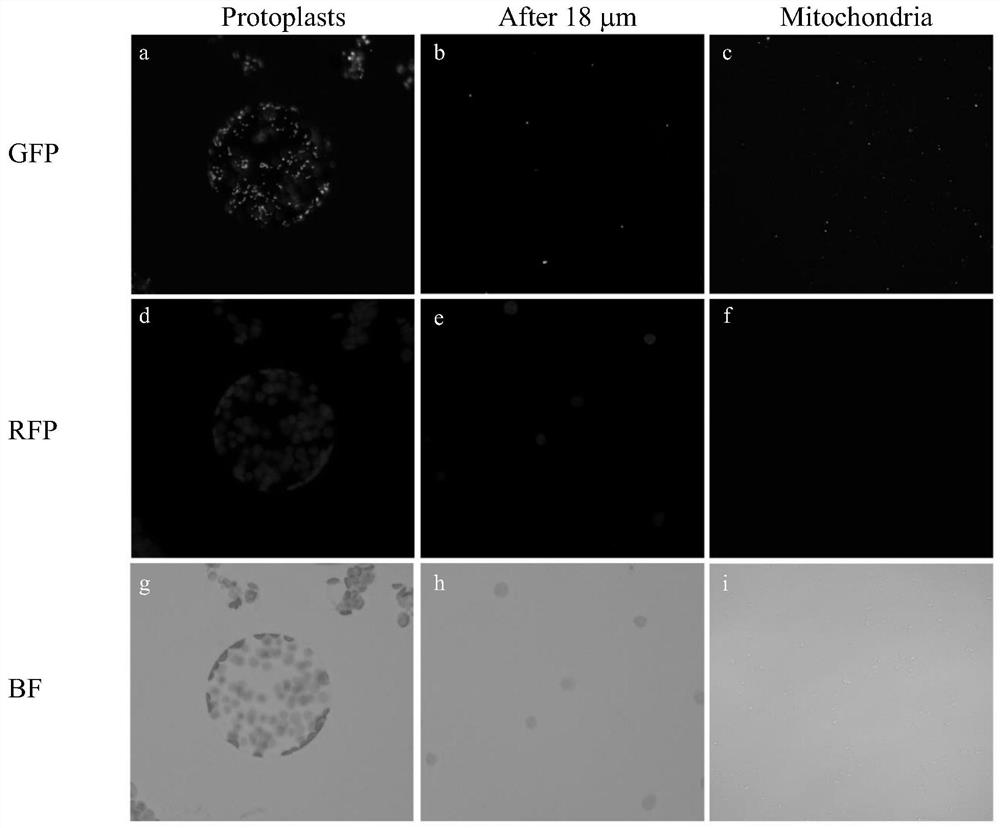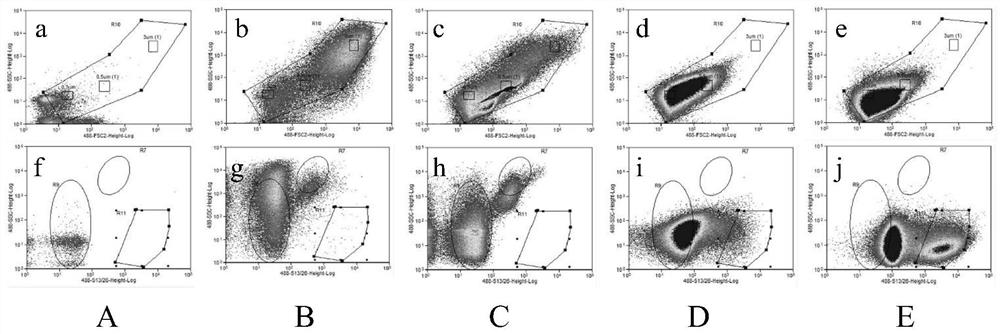Method for efficiently enriching plant mitochondria through protoplast
A protoplast, enriching plant technology, applied in plant cells and other directions, can solve the problems of cumbersome extraction process, unfavorable rapid acquisition of mitochondria, etc., and achieve the effect of high purity and elimination of interference.
- Summary
- Abstract
- Description
- Claims
- Application Information
AI Technical Summary
Problems solved by technology
Method used
Image
Examples
Embodiment Construction
[0028] The implementation of the present invention will be described in detail below in conjunction with the drawings and examples.
[0029] like figure 1 As shown, the present invention efficiently enriches plant mitochondria by protoplasts. After obtaining pure mitochondria, the inorganic alumina filter membrane is utilized in conjunction with differential centrifugation to target plant mesophyll cells (or other plant tissues that are easy to obtain protoplasts, other Plant tissues that can extract protoplasts can refer to this process), and the main steps of isolating and purifying mitochondria are:
[0030] 1) Cultivation of plant materials: Taking the leaves of tobacco (Nicotiana tabacum) as an example, mature and plump seeds of AtDIPS-GFP single-label transgenic tobacco were cultivated in plug trays, and the composition of the cultivation soil was nutrient soil by mass: compressed Soil: vermiculite = 1:1:1, temperature 23+1°C, 16 hours of light, 8 hours of dark cultivat...
PUM
 Login to View More
Login to View More Abstract
Description
Claims
Application Information
 Login to View More
Login to View More - R&D
- Intellectual Property
- Life Sciences
- Materials
- Tech Scout
- Unparalleled Data Quality
- Higher Quality Content
- 60% Fewer Hallucinations
Browse by: Latest US Patents, China's latest patents, Technical Efficacy Thesaurus, Application Domain, Technology Topic, Popular Technical Reports.
© 2025 PatSnap. All rights reserved.Legal|Privacy policy|Modern Slavery Act Transparency Statement|Sitemap|About US| Contact US: help@patsnap.com



